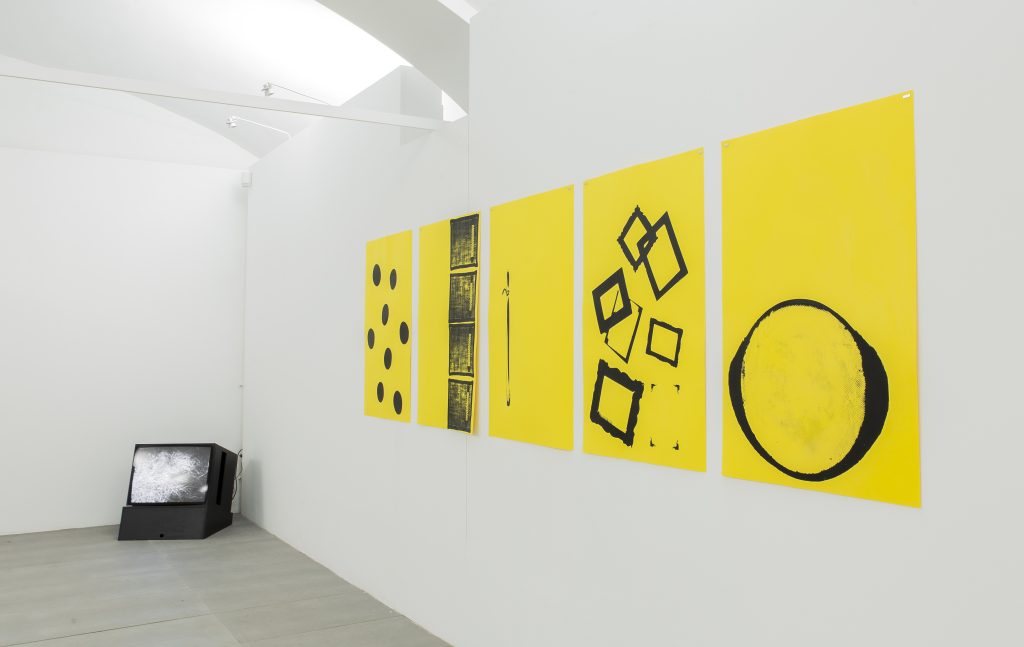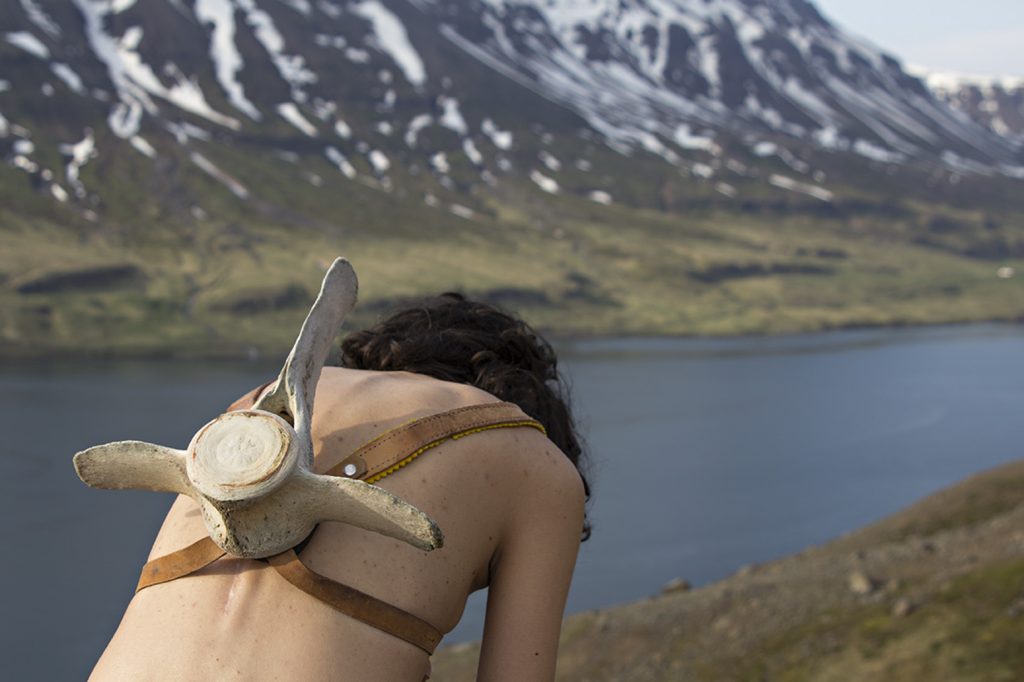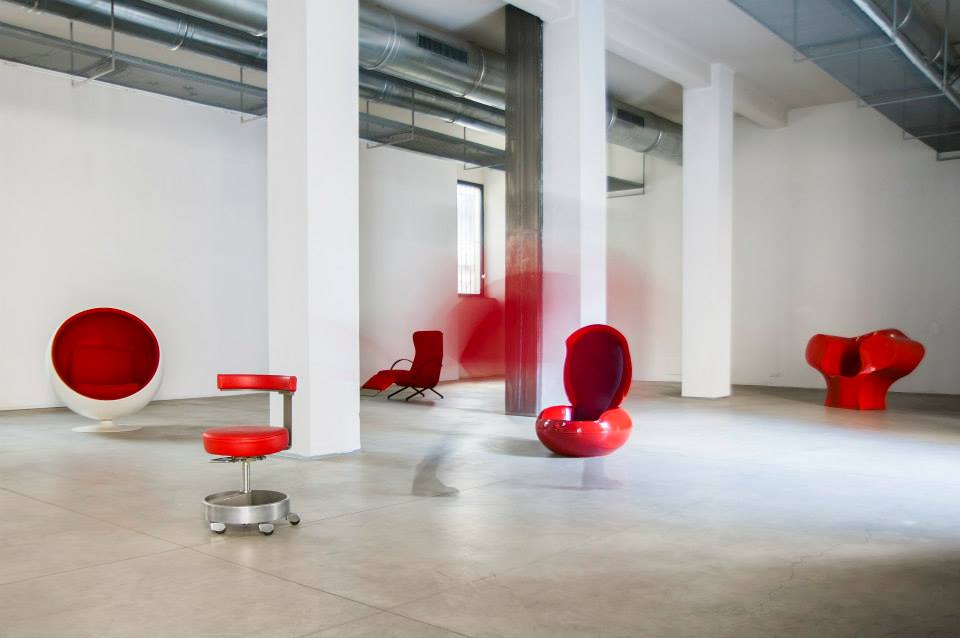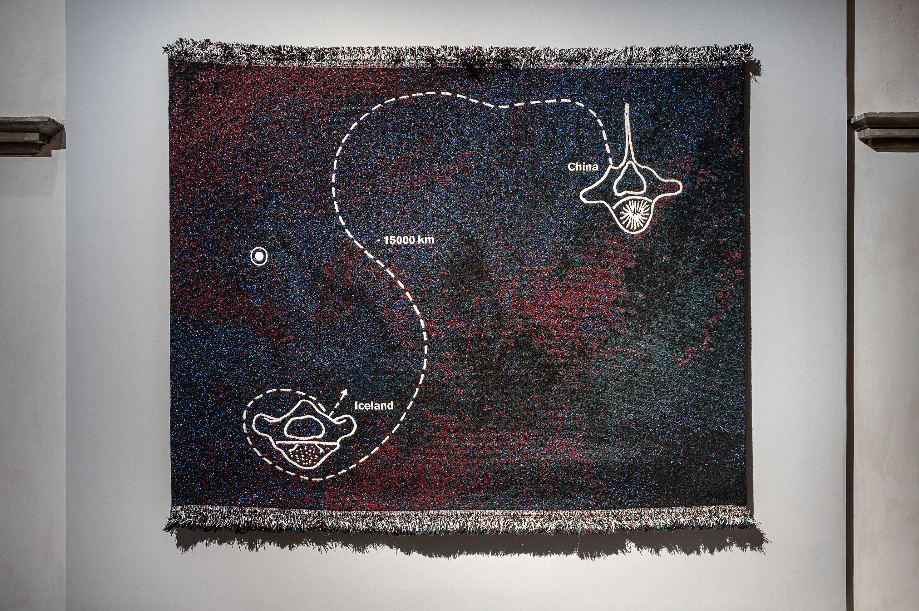Elena Mazzi’s artistic speculation is an anthem to sustainability. In her works the different and multiple relationships between man and his environment are investigated; from her acute observation and artistic re-elaboration these emerge indissolubly intersected, as are the media used in their realization. Her art is a form of activism at the service of the community.
In “Atlante energetico”, for example, she develops the issue of energy. This is identified with rice, which is one of the main global food resources, and investigated as a complex and delicate biological system that ideally unites Piedmont with Southeast Asia, the environment and the economy.
In “En route to the South, learning to be nomadic” the practice of nomadic beekeeping is related to the phenomenon of human migration. The installation was conceived with the intent of developing a cultural exchange through the sharing of specific knowledge; it consists of a beehive, a series of drawings, a wax engraving and a text.
The work “Spicule” is articulated starting from a reflection on the essential link between man and the sea. It took the form of four sculptures, inspired by particular marine animals as common as they are unknown: sponges. The title originates from the material of which their skeletons are composed. The installation represents a medium for carrying out educational and scientific activities, through the interaction with marine organisms and local bathers.
We will now deepen with the artist herself, her intentions, her method and her creations.

Her holistic approach is a guide to interdisciplinarity, to the pursuit of a broad view of reality.
Would you like to tell us briefly about yourself, what were the cornerstones in your formation.
After an experimental diploma in cultural heritage and design at the BUS (Two-year Experimental Liceo Artistico) in Reggio Emilia, a three-year degree in Art History in Siena and a couple of years of experience in museums and galleries, I enrolled in the two-year specialist course in Visual Arts IUAV in Venice and I spent a period at the Academy of Fine Arts in Stockholm. Surely the Slovenian architect and artist Marjetica Potrc, my teacher in the second year of Visual Arts, was a key figure in my artistic path, as was Joan Jonas, an artist I worked for once I left university as a assistant and performer. In other forms and modalities, I have been able to learn a lot from her, and I still continue to do so.

Your works are often characterized by co-authorship and participatory practice, transforming themselves into real experimental laboratories.
What are the roots of this modus operandi? Can you talk about your speculative method?
I believe that art is an excellent means of conveying messages, precisely because of its openness and flexibility in the use of languages. Art is a way to explore social relationships and the complex dynamics that characterize them. What interests me is to investigate the relationship between a human being and the surrounding environment, in which she lives and with which he confronts every day: an analysis that is often linked to an anthropological gaze and approach, which investigates an identity that is both personal and collective, which relates to a specific territory, but which also questions an often distorted media vision. The knowledge of the territory takes place through direct experience, trying to identify and deepen a space not frequented in the cities and to open a new path, thus activating a process that involves a part of the community. I like to discover new possible practices and strategies of living together with the inhabitants themselves. Designing territories is not only an act of planning but it is also a creative act, the attempt to grasp contradictions and transform them into relationships, taking care to modify, not the space, but its perception.

Your latest project, “Silver Rights”, had a long incubation. The research began in 2012 and then continued on the ground in 2020, but abruptly interrupted by the pandemic. In these almost 10 years, the concept of sustainability has broken through the veil of Maya, overwhelming the mainstream debate. This also happened in the fashion sector, closely linked to the Mapuche territory (among the multinationals and the new big “landowners”, in fact, the Benetton group appears; the latter owns about 900 thousand hectares of land on which almost 100 thousand sheep graze , fundamental link of the company supply chain).
Is your impression that there have been significant changes in this time frame?
Unfortunately, I must admit that the situation has not improved at all, on the contrary, it has gotten worse. In fact, in recent days, new violence has been perpetrated in the territories that the Mapuche are struggling to recover. The multinationals, with the complicity of the state, continue to send police troops to monitor the natural areas destined for the imminent construction of new infrastructures that will inevitably devastate the ecosystem and biodiversity of these territories, which the Mapuche are struggling to safeguard. In fact, many indigenous communities in Latin America have come together to denounce this phenomenon, wich is under the term ‘Terricide’. As they themselves declare, “we have composed this term to summarize all the forms in which the system kills: ecocide, femicide, genocide, epistemicide. All methods to suppress life on earth ”. Benetton is currently the main landowner on Argentine soil and therefore one of the main persons responsible for this process. As an Italian artist, I feel obliged to denounce this situation, also considering that the advertising communication strategy of the fashion house has always been centered on the values of sustainability, ethics and social commitment that are not applied in reality.

Although the effects of climate change are there for all to see, there still seems to be a reluctance to become aware of one’s ecological footprint and to change one’s habits.
How effective do you think artistic language is in countering the misunderstanding of the problem and educating people, and how can it do it?
I believe that art can play a fundamental role in life, in society, in politics. Each of us needs art, and each of us looks at art according to their sensitivities, needs. For me the artist has an active role in society, asking himself, through different tools, questions shared by the community. I love to follow the possible different translations that the artistic medium allows us to develop, responding to current issues in unusual ways, but no less effective than others. The important thing is to instill doubt, to push questions.
What projects are you currently working on?
Apart from the exhibitions in progress at Der TANK in Basel and at BIENALSUR in Argentina, I will shortly present my latest video shot in Iceland at the MADRE Museum in Naples in a large exhibition entitled Re-thinking Nature. Here I carried out the research conducted on the Polar Silk Road, the new artery connecting Asia and Europe that should cross the Arctic, as soon as it is sufficiently dissolved. I am then completing a new work, the result of a research grant at the Faculty of Design and Art of the Free University of Bozen-Bolzano, within which I worked with the bio-chemistry department on the analysis of soil pesticides. Furthermore, my first monograph with the Museo del Novecento in Florence will be published shortly, following the personal exhibition in 2020.
To learn more about Elena Mazzi’s work, I warmly invite you to visit her website and get lost in her portfolio: https://elenamazzi.com/works/
To learn about the work of other artists who commit their art to the service of the collectivity: https://www.thegreensideofpink.com/design/arte/2021/marina-debris-linquinamento-dei-mari-rinasce-arte/





